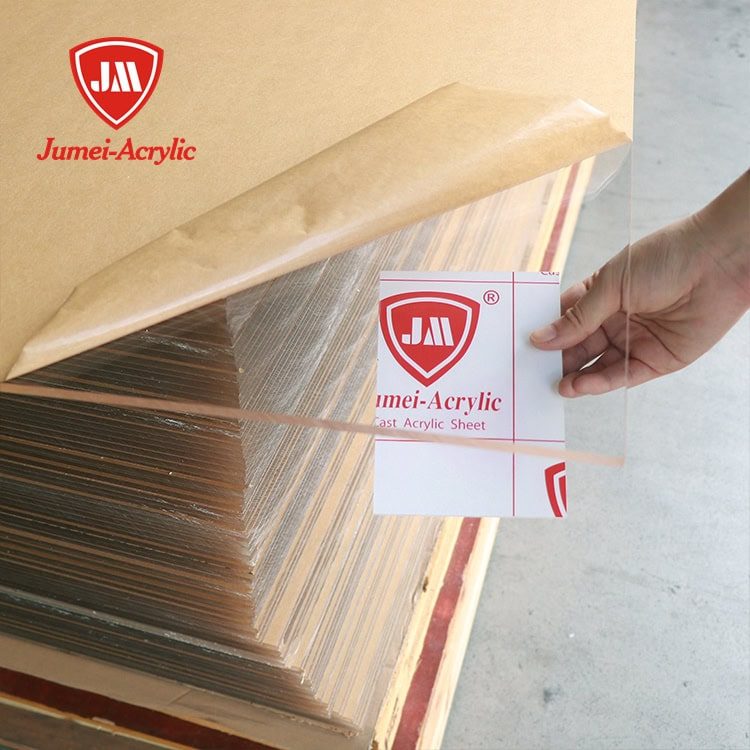Acrylic sheets, also known as plexiglass or perspex, are one of the most versatile and widely used materials in industries ranging from construction and signage to interior design and DIY projects. Known for their durability, clarity, and lightweight nature, acrylic sheets have become a popular alternative to glass and other plastics. But what exactly is acrylic, how is it made, and where can you buy it in bulk for your projects?
What is Acrylic?
Acrylic, scientifically known as Poly(methyl methacrylate) or PMMA, is a transparent thermoplastic often used as a lightweight and shatter-resistant alternative to glass. It was first developed in the 1930s and has since become a staple material in various industries due to its unique properties:
- Transparency: Acrylic sheets offer exceptional clarity, allowing up to 92% of light to pass through, making them ideal for applications like windows and displays.
- Lightweight: Acrylic is about half the weight of glass, making it easier to handle and transport.
- Durability: Unlike glass, acrylic is highly impact-resistant and less likely to shatter.
- UV Resistance: Acrylic sheets are resistant to yellowing and degradation from sunlight, making them perfect for outdoor use.
- Versatility: Acrylic can be easily cut, shaped, and customized to fit specific needs.
Acrylic vs. Plastic: While acrylic is a type of plastic, it stands out due to its superior clarity, strength, and resistance to weathering compared to other plastics like polycarbonate or PVC.
How is Acrylic Made?
The production of acrylic sheets involves a fascinating chemical process called polymerization. Here’s a breakdown of how acrylic is manufactured:
- Polymerization:
- Acrylic is created by polymerizing methyl methacrylate (MMA) monomers.
- This process can be done through two main methods: extrusion and casting.
- Extrusion vs. Casting:
- Extruded Acrylic: This method involves heating acrylic pellets and forcing them through a machine to form sheets. Extruded acrylic is more cost-effective and suitable for general-purpose applications.
- Cast Acrylic: In this method, liquid MMA is poured into molds and allowed to harden. Cast acrylic is denser, more durable, and ideal for high-end applications like aquariums or display cases.
- Forming Sheets:
- Once polymerized, the acrylic is formed into sheets of varying thicknesses, sizes, and finishes (e.g., clear, frosted, or colored).
What Are Acrylic Sheets Used For?
Acrylic sheets are incredibly versatile and used in a wide range of applications:
- Signage and Displays: Acrylic’s clarity and durability make it perfect for custom signage, retail displays, and exhibition stands.
- Interior Design: From bathroom panels and furniture (tables, shelves) to room partitions, acrylic adds a modern touch to interiors.
- DIY Projects: Crafters and hobbyists use acrylic for model making, picture frames, and home improvement projects.
- Protective Barriers: Acrylic is widely used for protective screens, window shields, and safety enclosures.
- Specialized Applications: Aquarium tanks, car windows, and medicine cabinets are just a few examples of acrylic’s specialized uses.
How to Choose Acrylic Sheets for Your Project
When selecting acrylic sheets, consider the following factors:
- Thickness: Thicker sheets are more durable and suitable for heavy-duty applications, while thinner sheets are ideal for lightweight projects.
- Color and Finish: Choose from clear, frosted, matte, or colored acrylic based on your aesthetic and functional needs.
- Customization: Many suppliers offer custom sizes and cuts to fit your specific requirements.
Wholesale Acrylic Sheets: Where and How to Buy
If you’re planning a large project or running a business, buying acrylic sheets in bulk can save you time and money. Here’s what you need to know:
- Benefits of Buying Wholesale:
- Cost savings through bulk discounts.
- Consistent supply for ongoing projects.
- Customization options for large orders.
- How to Find Reliable Suppliers:
- Look for suppliers with positive reviews and a strong reputation.
- Compare pricing, delivery options, and customer support.
- Request samples to assess quality before placing a large order.
How to Work with Acrylic Sheets
Working with acrylic sheets is relatively straightforward if you have the right tools and techniques:
- Cutting: Use a saw, score-and-snap method, or laser cutting for precise cuts.
- Drilling and Shaping: Drill slowly to avoid cracking, and use a heat gun for shaping.
- Finishing Edges: Smooth and polish edges with sandpaper or a flame polisher for a professional look.
Acrylic sheets are a versatile, durable, and cost-effective material suitable for countless applications. Whether you’re a business owner looking for wholesale options or a DIY enthusiast starting a new project, understanding how acrylic is made and used can help you make the most of this incredible material.





